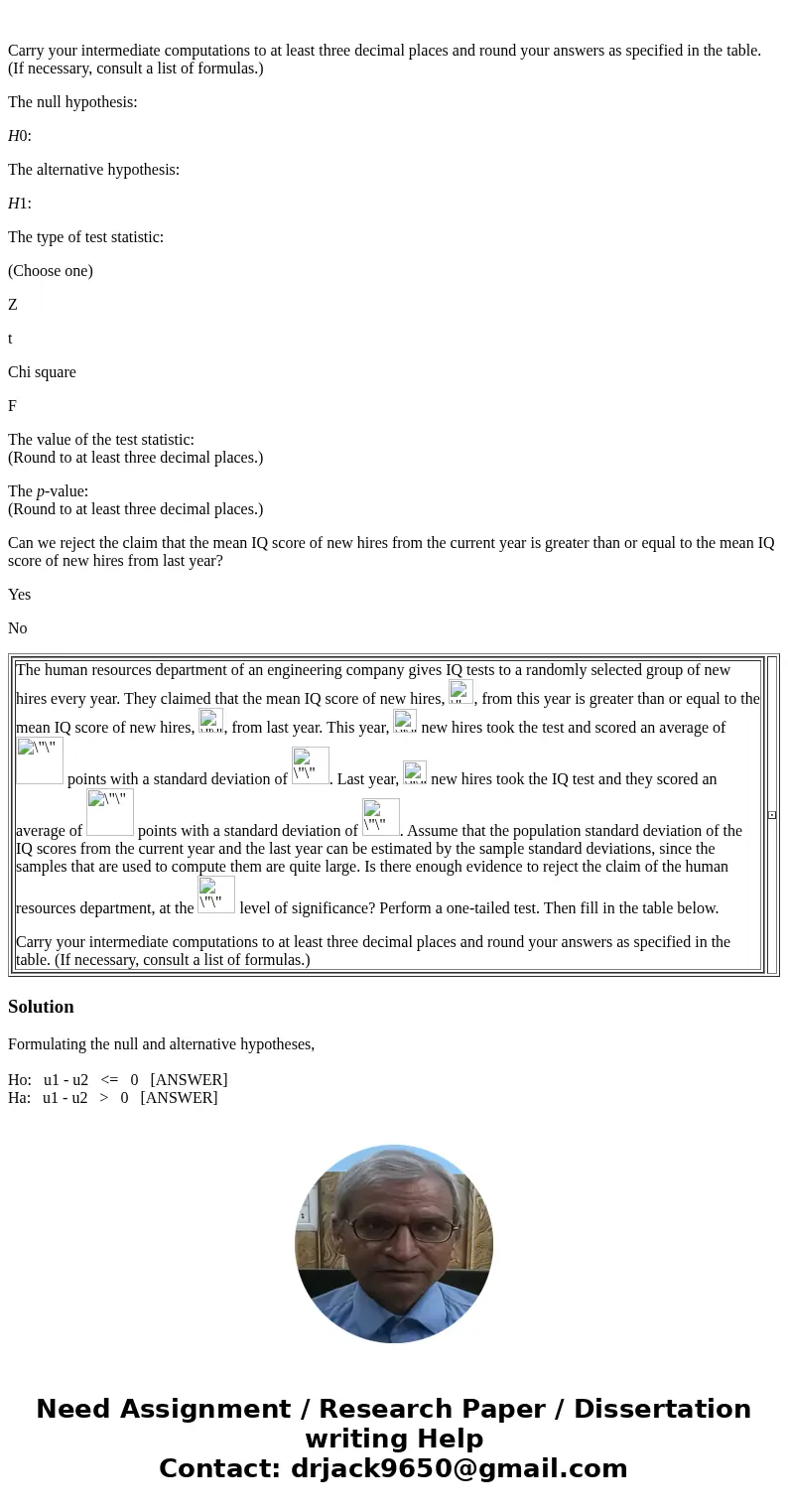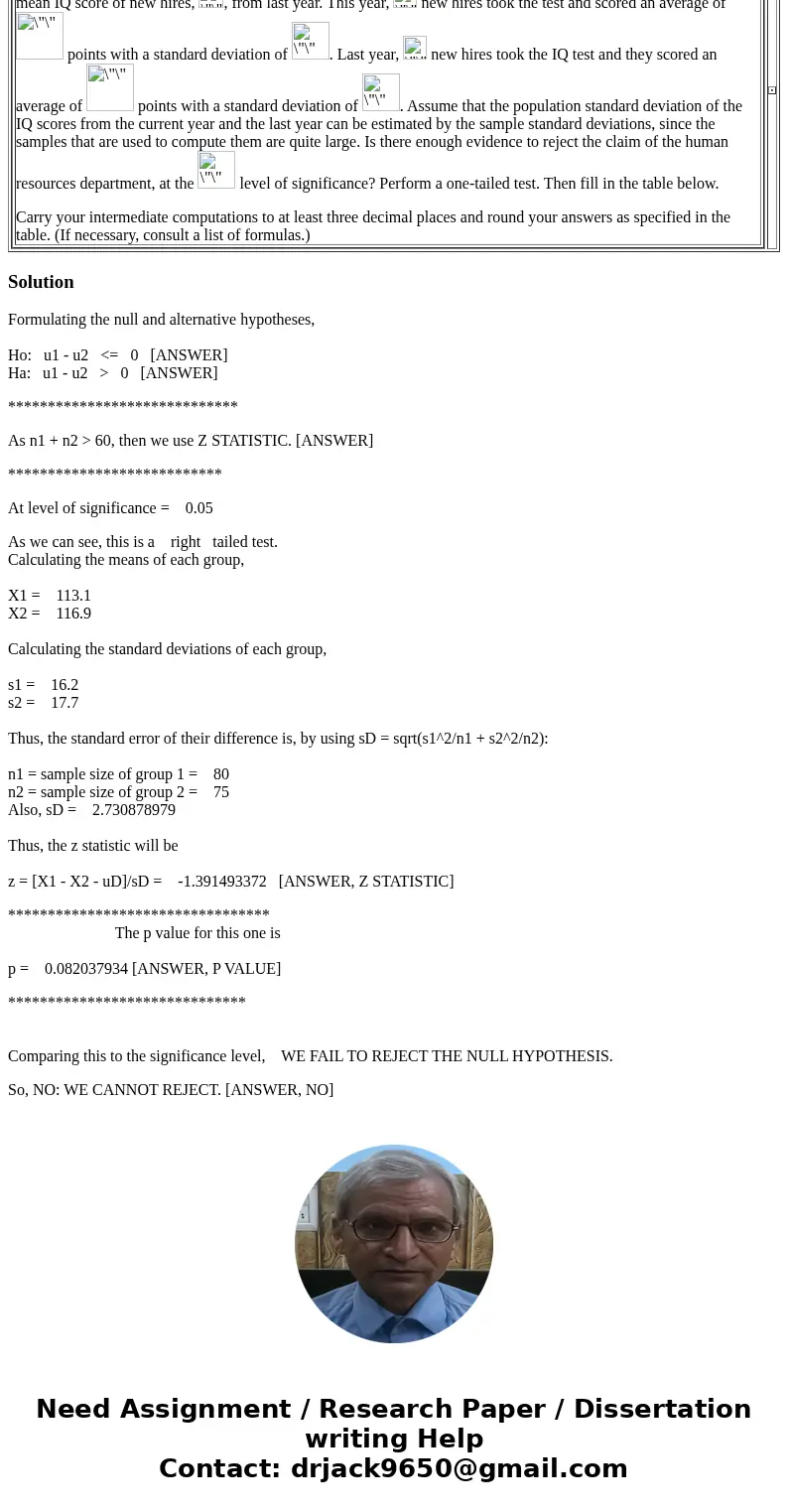Carry your intermediate computations to at least three decim
Carry your intermediate computations to at least three decimal places and round your answers as specified in the table. (If necessary, consult a list of formulas.)
The null hypothesis:
H0:
The alternative hypothesis:
H1:
The type of test statistic:
(Choose one)
Z
t
Chi square
F
The value of the test statistic:
(Round to at least three decimal places.)
The p-value:
(Round to at least three decimal places.)
Can we reject the claim that the mean IQ score of new hires from the current year is greater than or equal to the mean IQ score of new hires from last year?
Yes
No
| |
Solution
Formulating the null and alternative hypotheses,
Ho: u1 - u2 <= 0 [ANSWER]
Ha: u1 - u2 > 0 [ANSWER]
*****************************
As n1 + n2 > 60, then we use Z STATISTIC. [ANSWER]
***************************
At level of significance = 0.05
As we can see, this is a right tailed test.
Calculating the means of each group,
X1 = 113.1
X2 = 116.9
Calculating the standard deviations of each group,
s1 = 16.2
s2 = 17.7
Thus, the standard error of their difference is, by using sD = sqrt(s1^2/n1 + s2^2/n2):
n1 = sample size of group 1 = 80
n2 = sample size of group 2 = 75
Also, sD = 2.730878979
Thus, the z statistic will be
z = [X1 - X2 - uD]/sD = -1.391493372 [ANSWER, Z STATISTIC]
*********************************
The p value for this one is
p = 0.082037934 [ANSWER, P VALUE]
******************************
Comparing this to the significance level, WE FAIL TO REJECT THE NULL HYPOTHESIS.
So, NO: WE CANNOT REJECT. [ANSWER, NO]


 Homework Sourse
Homework Sourse